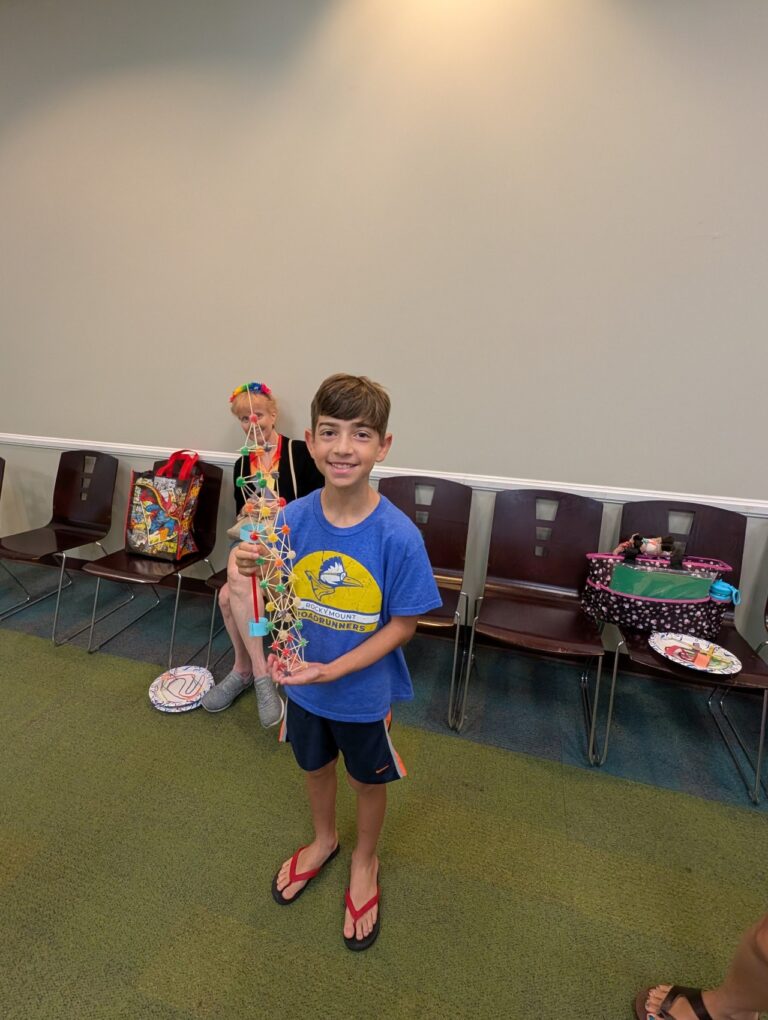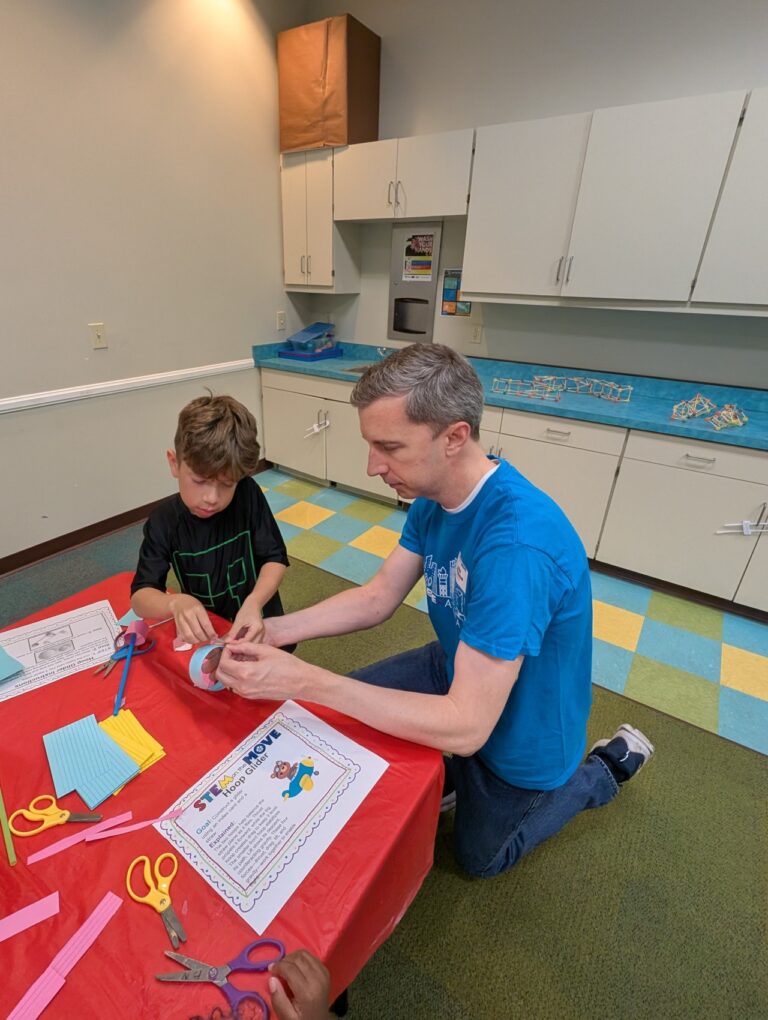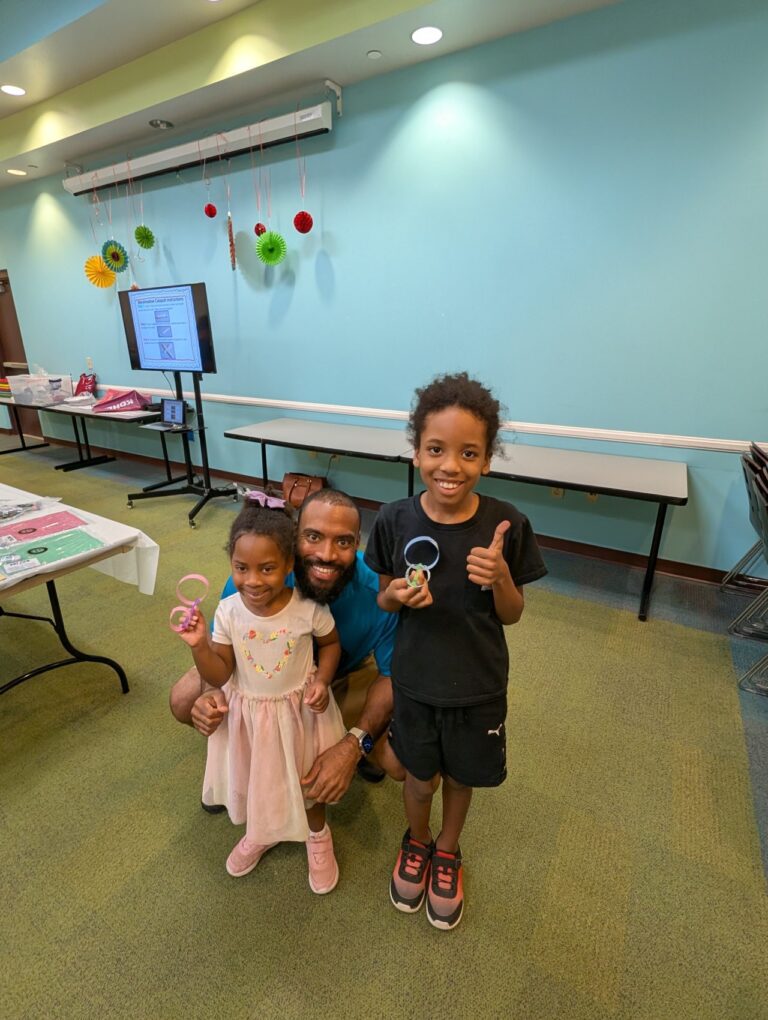Rosie Revere Guided Workshop



Rosie Revere, Engineer Guided Workshop
Welcome & Introduction
Introductions
Icebreaker: “What do Engineers do?” and discussion.
Introduce Rosie Revere, Engineer is a book about creativity, resilience, and the joy of engineering. Rosie, a young inventor, learns to embrace failure as a stepping stone to success. Through trial and perseverance, she discovers that mistakes are part of the creative process and that persistence leads to innovation.-
Real-World Tie-In: Engineers design everything around us—bridges, airplanes, toys, and even roller coasters!
Read Rosie Revere Engineer, by Andrea Beaty
Discussion Points:
- Why was Rosie afraid to share her inventions?
- What did she learn about failure?
- How do engineers test and improve their designs?
Real-World Tie-Ins:
- Thomas Edison was told by his teachers that he was “too stupid to learn anything,” yet he went on to hold over 1,000 patents, including the phonograph and the practical electric lamp
- Sir James Dyson built 5,126 failed prototypes over 15 years before creating the best-selling bagless vacuum cleaner
- Henry Ford failed multiple times before revolutionizing the automobile industry. His first two car companies went bankrupt, but he persisted and eventually introduced the Model T, making cars affordable for the masses.
Transition: STEM challenges teach us that trial and error are part of the creative process. One fun way to explore engineering principles is by building a gumdrop structure!
In this hands-on activity, you’ll use gumdrops and toothpicks to create a sturdy structure, just like real engineers design bridges and buildings. As you build, you’ll test different shapes—like triangles and squares—to see which ones provide the most stability. If your structure collapses, don’t worry! Adjusting and improving your design is exactly how engineers solve problems in the real world.
Let’s get started and see what you can create!
Activity 1: Gumdrop Structures
- Challenge: Build the tallest, most stable tower using toothpicks and gumdrops/marshmallows.
- Engineering Concept: Structural stability, balance, and iteration.
- Real-World Tie-In: Engineers design skyscrapers and bridges using similar principles!
Transition: Building gumdrop structures teaches us about stability and strength in engineering—but what about flight? Just like engineers design sturdy bridges, they also create lightweight, aerodynamic structures for airplanes and rockets. Now, let’s explore aerodynamics by making a hoop glider!
Instead of traditional wings, a hoop glider uses paper loops and a straw to stay in the air. Engineers experiment with different shapes and materials to improve flight performance, just like NASA scientists designing spacecraft. By adjusting the size and placement of the hoops, you’ll discover how forces like lift and drag affect how far and smoothly your glider flies.
Let’s build and test a hoop glider to see engineering in action!
Activity 2: Hoop Glider
- Challenge: Create a hoop glider and test how different designs affect flight.
- Engineering Concept: Aerodynamics, trial-and-error, and design optimization.
- Real-World Tie-In: Airplane engineers test different wing shapes to improve flight efficiency!
Transition: Catapults demonstrate principles of potential and kinetic energy, just like engineers use in designing launching mechanisms for rockets and roller coasters. Using popsicle sticks, rubber bands, and a spoon, you’ll build a simple catapult to launch mini marshmallows. By adjusting the angle and tension, you’ll see how force affects distance and accuracy—just like real engineers testing projectile motion.
Let’s build, test, and refine our marshmallow catapults to see physics in action!
Activity 3: Marshmallow Catapult
- Challenge: Build a catapult using popsicle sticks, rubber bands, and a spoon to launch mini marshmallows.
- Engineering Concept: Learn about potential and kinetic energy—how stored energy in the rubber band transforms into motion when released.
- Real-World Connections: Engineers use similar principles when designing catapults, trebuchets, and even modern launching systems for rockets, roller coasters, and sports equipment.
Transition: Just like marshmallow catapults demonstrate forces and motion, engineers also design pathways that control movement—whether it’s guiding a rocket’s trajectory or designing a roller coaster’s twists and turns. Now, let’s explore problem-solving and design with a paper plate marble maze!
Activity 4: Paper Plate Marble Maze
Challenge: Design a maze using paper plates and straws, then test how marbles navigate through.
Engineering Concept: Problem-solving, angles, and iterative design.
Real-World Tie-In: Engineers design amusement park rides and obstacle courses using similar thinking!
Wrap Up
We’ve explored engineering through gumdrop structures, hoop gliders, marshmallow catapults, and paper plate marble mazes—each activity showing how creativity, problem-solving, and persistence lead to innovation.
Key Takeaways:
- Failure is part of the process! Just like famous engineers, we learned that testing, adjusting, and improving designs help us succeed.
- Engineering is everywhere. From stability in buildings to aerodynamics in flight, forces in motion, and pathways for movement, these concepts shape the world around us.
- Keep experimenting! Whether it’s refining a catapult or designing a new maze, engineering is about curiosity and continuous learning.
Thank You!
A huge thank you to everyone who attended today’s workshop! Your enthusiasm and creativity made this event a success.
If you want more STEM challenges and to learn about MOVE Global, please visit movestem@ieee.org.
Keep building, testing, and exploring—because every great engineer starts with a simple idea and the courage to try.

